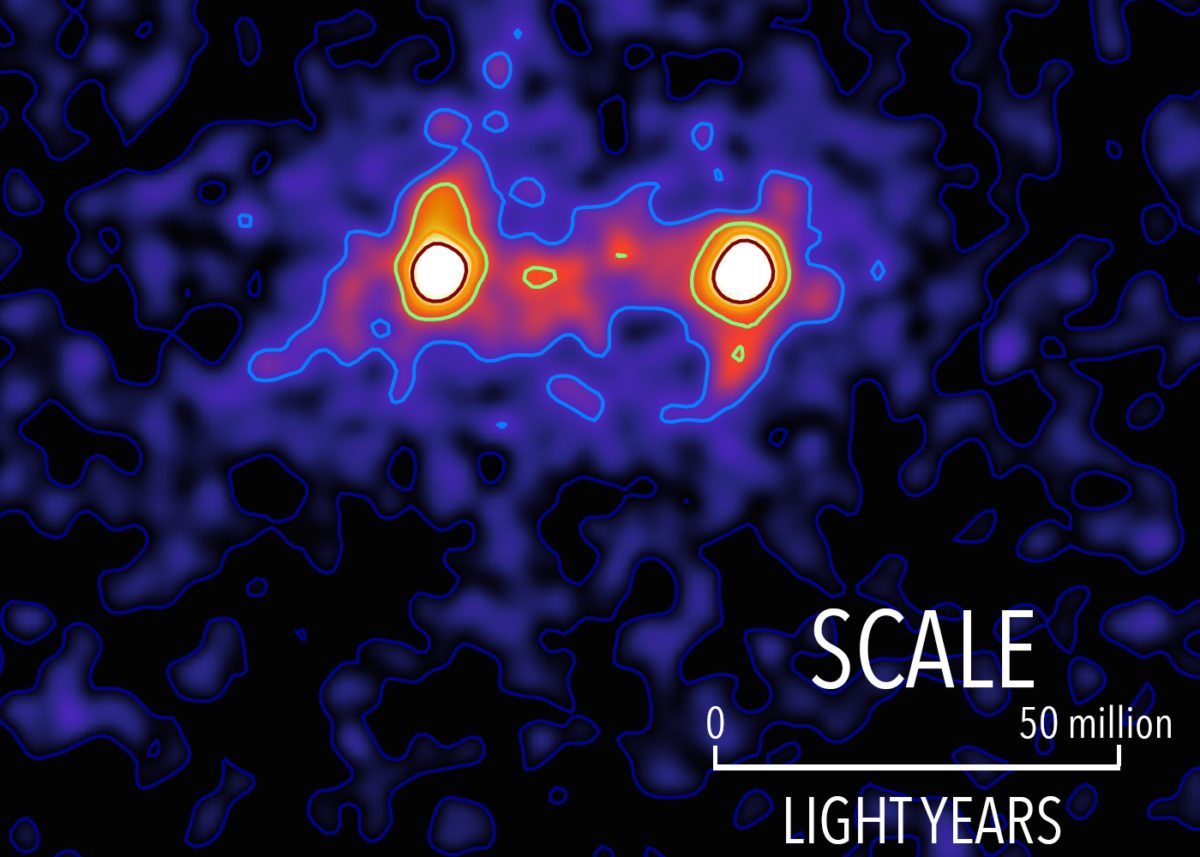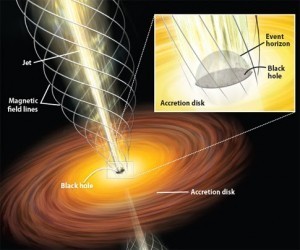Dark matter is difficult to study. Since it doesn’t interact with light, it is basically invisible. But it does have mass, and that means it deflects light ever so slightly, an effect known as weak gravitational lensing. By observing the way light from distant galaxies is distorted, we can map the distribution of mass between us and the galaxies. Comparing this to the visible matter of galaxies allows us to map the presence of dark matter. This technique works well when measuring large regions of dark matter, such as the halos around galaxies, but gravitational lensing is such a weak effect it’s difficult to study the detailed structure of dark matter. That’s unfortunate, because the details are what we need to understand the nature of dark matter.

A computer simulation showing filaments of dark matter between clusters of galaxies. Credit: Michael L. Umbricht
The dominant model for dark matter makes several predictions we can test. For example, it predicts that dark matter will clump together gravitationally, and that means galaxies will also cluster together at a particular scale. This is exactly the clumping scale we observe across the cosmos. But there are also predictions we can’t easily test, such as dark matter filaments. As dark matter clumps together, some of the dark matter should be left behind, forming filaments of dark matter that connect galaxies and clusters of galaxies. These filaments have long been thought to exist, but detecting them is extremely difficult. Their gravitational influence is so small any weak lensing they produce is almost indistinguishable from random noise.
There has been some evidence of dark matter filaments. Comparisons of faint lensing between galaxies agrees with models of dark matter filaments, but with weak data you have to be careful not to presume too much about your model. A new paper in MNRAS tries to overcome this issue by taking a different approach. Rather than trying to observe filaments within a single cluster of galaxies, the team looked at data from thousands of filaments.
Taking data from the Baryon Oscillation Spectroscopic Survey, they focused on about 23,000 pairs of Luminous Red Galaxies (LRGs). These galaxies are particularly bright, and are easy to distinguish from other galaxies. They also have very similar structures, which makes them useful to study statistically. The team then measured the weak lensing between these pairs of galaxies. Individually the lensing between them would be hard to distinguish from random distortions, but they then combined the data from the pairs to create an overall average. In this way any random distortions would tend to wash out, leaving only the effects of dark matter. The result is a statistical image of the dark matter filaments between galaxy pairs.
While the result is statistical, it doesn’t rely upon a dark matter model to infer its presence. It also agrees with the statistical predictions of dark matter filaments. It’s yet another success for the dark matter model.
Paper: Seth D. Epps et al. The weak-lensing masses of filaments between luminous red galaxies. Monthly Notices of the Royal Astronomical Society. DOI: 10.1093/mnras/stx517 (2017)











